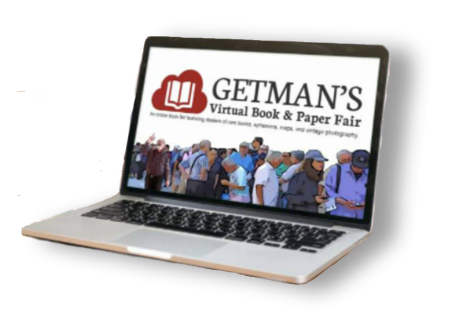Postcard from the Colorado Antiquarian Book Seminar: Love Letter to Bibliography
/Sometimes a little bit of research on a book and pamphlet can break open a whole new understanding of a place or time period, and that’s especially helpful for booksellers trying to properly document and identify items for sale.
At the 42nd iteration of the Colorado Antiquarian Book Seminar (CABS), held this July in Colorado Springs, fifty students, including novice and veteran booksellers, collectors, archivists and librarians came from all over the world to learn new skills and update old ones. One of the most important lessons imparted by the faculty is that bibliography—the study of a book as an object--is a critical tool in the arsenal of any bookseller.
Shelf of Bibliographies
Photo:El;isa Shoenberger
“Bibliography provides a key to unlock the value or story of an item that is in your hand,” explains Garrett Scott, sole proprietor of Garrett Scott, Bookseller and CABS faculty member. That story can add interest and, in turn, value, to a book or piece of ephemera.
The first step, however, is for the bookseller to “look at the book in hand,” as Scott recommends. That may mean reviewing the copyright page, printer’s marks, binding, boards, dust jacket, illustrations, and even the text itself. This detective work allows a deeper understanding of the context in which the book was made and used, as well as how it ended up in the bookseller’s hands.
Next, “follow your nose,” on leads found during the initial examination of the book. Sometimes, as Scott explains, that means exploring secondary sources to gain further insight into the object. This research can help price the piece accurately. Resources may include standard bibliographies, newspaper articles contemporaneous with the book, journal articles, and smart Googling. Of course, it’s also possible that this research will yield little, but the effort should be undertaken nonetheless.
Ultimately, fact-finding missions like these help sell the item, whether it’s to a prospective buyer or to provide background information in a catalog—in other words, the facts can validate a particular price point and entice a buyer to seal a deal.
For example, Scott discovered exciting information concerning a 19th century manuscript in an unknown hand containing 37 transcriptions of speeches given largely in Hopedale or Milford, Massachusetts. By consulting various sources, Scott learned that one of the transcriptions was an almost verbatim speech by Hezekiah Ford Douglas (1831-1865), a former slave and powerful orator who was an “ardent advocate for colonization in the same way that Malcom X argued for Black separatism. He often debated Frederick Douglas on stage on the topic of colonization versus integration.” Additionally Scott delved into the history of Hopedale, a “unitarian utopian community,” which in turn led him to an article about H. Ford Douglas written in the 1977 edition of American national biography by Robert L. Harris.
Due to the manuscript’s historical value, that manuscript was later acquired by an institution of higher education. Scott says, “I was able to build on the work of the scholars before me to unlock the item’s value.” Now safely tucked away in academia, Douglas’s notes may one day serve as primary source material for future students.
Close examination and concerted research can reap great rewards for booksellers and collectors who take the time to understand the life and times of their book.
Elisa Shoenberger is a researcher and writer. She has published articles and essays at the Boston Globe, the Rumpus, Deadspin, Syfy, and other outlets. She is a regular contributor to Book Riot and is the co-editor and co-founder of The Antelope: A Journal of Oral History and Mayhem



